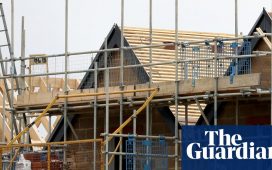Ascentxmedia | E+ | Getty Images
Rent prices for one- and two-bedroom apartments grew in March for the first time in six months.
The monthly cost for a one-bedroom apartment across the U.S. bumped up to $1,487, a 0.3% increase from February. The price of a typical two-bedroom apartment also jumped 0.5% to $1,847, according to a new report by Zumper, a real estate data site.
While prices are up overall, some metro areas saw declines. For example, the rent price for a one-bedroom apartment in Baltimore, Maryland, is $1,390, down 0.7% from a year ago, per Zumper.
Arizona is unique, with rent decreases in all the major metro areas assessed. On a statewide level, the median price for one-bedroom apartments declined to $1,311 in March, about a 4% decline from $1,365 a year ago, according to Zumper data.
The broader rental market’s slight increase in prices may be a reflection of old seasonal patterns, experts say.
“It’s kind of expected,” said Crystal Chen, a spokeswoman for Zumper. “When we get to the warmer months, that’s when demand picks up.”
More from Personal Finance:
How to use rent reporting services to improve credit
Three ways Gen Zers can build credit before renting their own place
What to know about about a condo and a co-op apartment
“During the colder months of the year … the rental market tends to be cool,” said Jacob Channel, a senior economist at LendingTree. “As we get closer and closer to summer, we start to see rent prices increase in more places.”
Yet, some fundamental factors such as supply and demand may also be reflected, said Susan M. Wachter, a professor of real estate and finance at The Wharton School of the University of Pennsylvania.
Why Arizona prices are coming down
Some markets in the country are cooling more than others. Prices in the Sun Belt and the intermountain areas are coming down, and Arizona is a prime example, Chen said. Zumper defines the intermountain region as Arizona, Nevada and Colorado.
“All of the Arizona cities on our report either had flat or declining year-over-year rates,” she said.
The city of Glendale, for example, had the largest rent decline, with one-bedroom prices down over 10% from this time last year.
Arizona has a lot of supply coming online, keeping rent prices down in the area, Wachter explained.
“In the data, there’s some evidence of fundamentals at play, in addition to seasonality,” she said.
Phoenix is expected to add more than 33,000 new units available this year and many buildings in the state are offering concessions, such as waived deposits or application fees and up to two months of free rent, Zumper found.
“If you’re in that market, it’s a great time for renters to snag an amenity-rich apartment that would have been out of reach otherwise,” Chen said.
Supply plays into rent prices elsewhere
While more supply is expected to surge in the Sun Belt and the intermountain region, a lot of Midwestern and Northeast markets are undersupplied, making rent prices push upward.
“The supply coming online absolutely does vary by market,” Wachter said.
Rent prices for one-bedroom apartments are up 25% in New York City from a year ago, according to Zumper. Rent costs and high competition also plague areas such as Columbus, Ohio, and Norfolk, Virginia.
Yet, while prices increased, they’ve significantly declined from a year ago and even more compared with the market volatility from 2021 and 2022, when pent-up demand kept prices high.
“Rent prices are going up and they are expensive, but it’s not suddenly skyrocketing again,” Channel said.
“We don’t expect to see national rates spike at all like in 2021 and 2022,” Chen said. “The seasonality is coming back after two crazy years.”
While many factors affect housing affordability in the U.S., the main one, in simplest terms, is poor supply, Channel said.
“The more rental units that are built, the lower prices are likely to go, and I think Arizona shows that really well,” he said.










